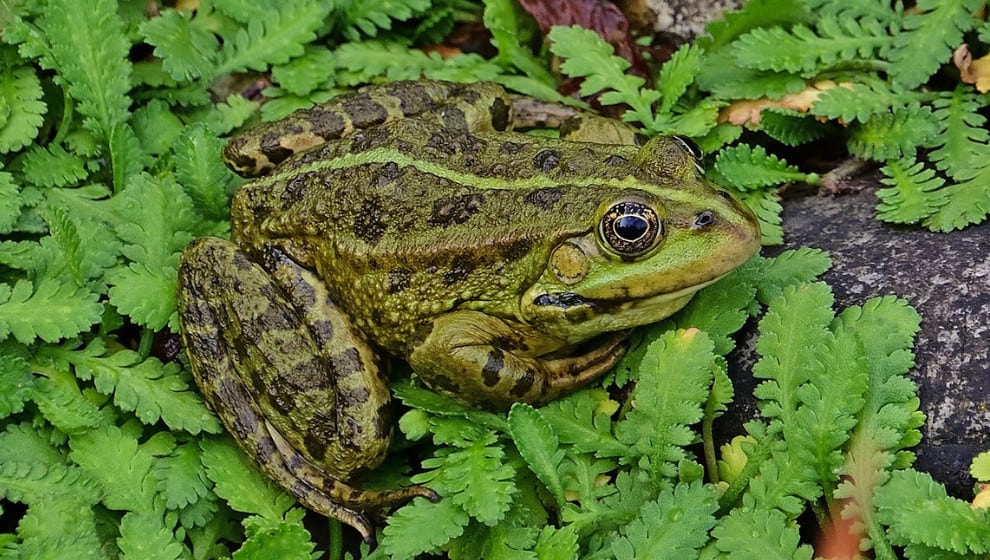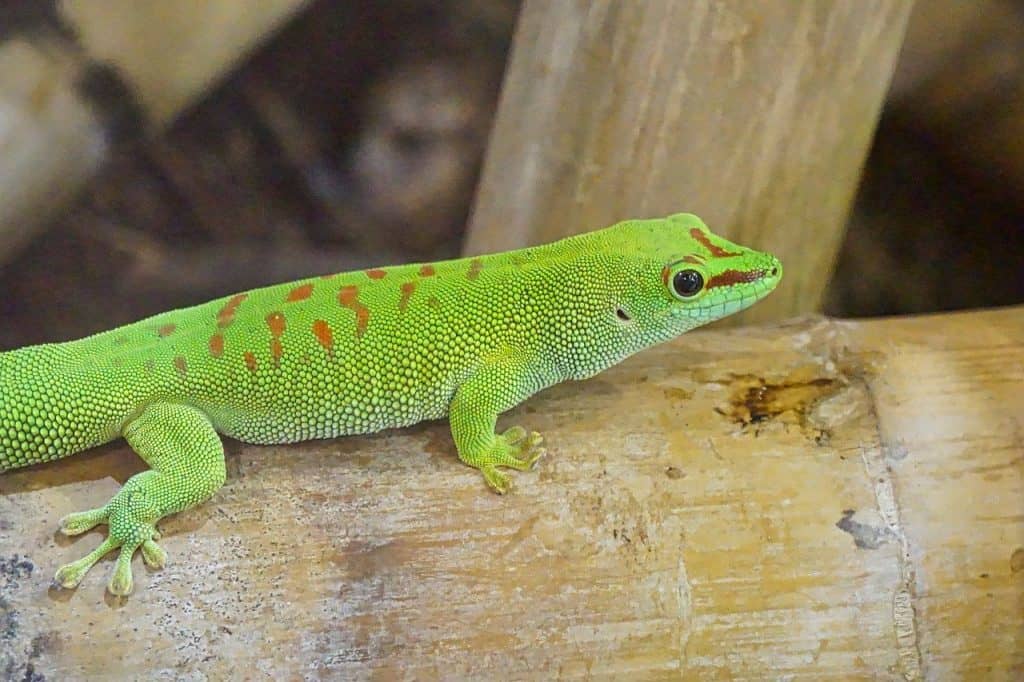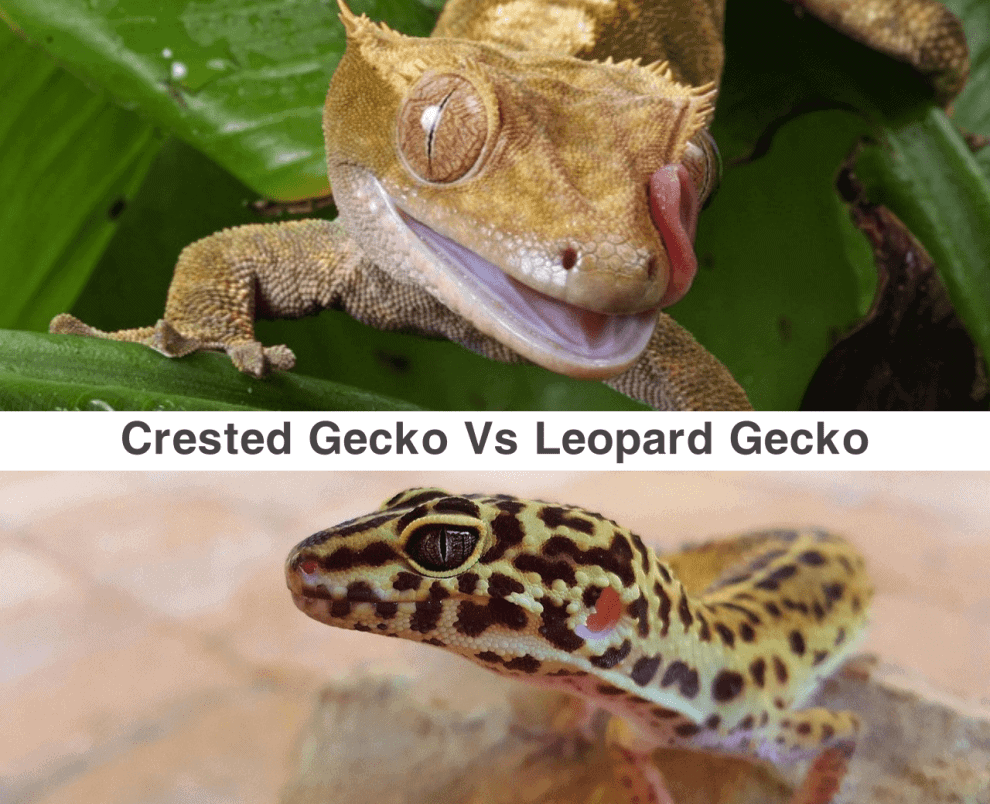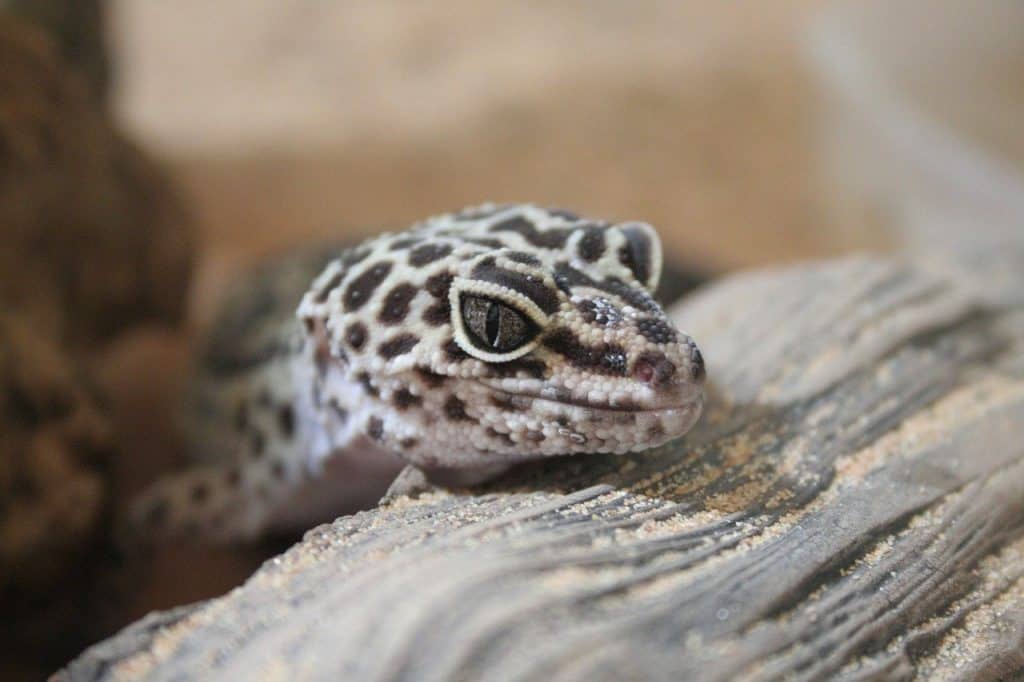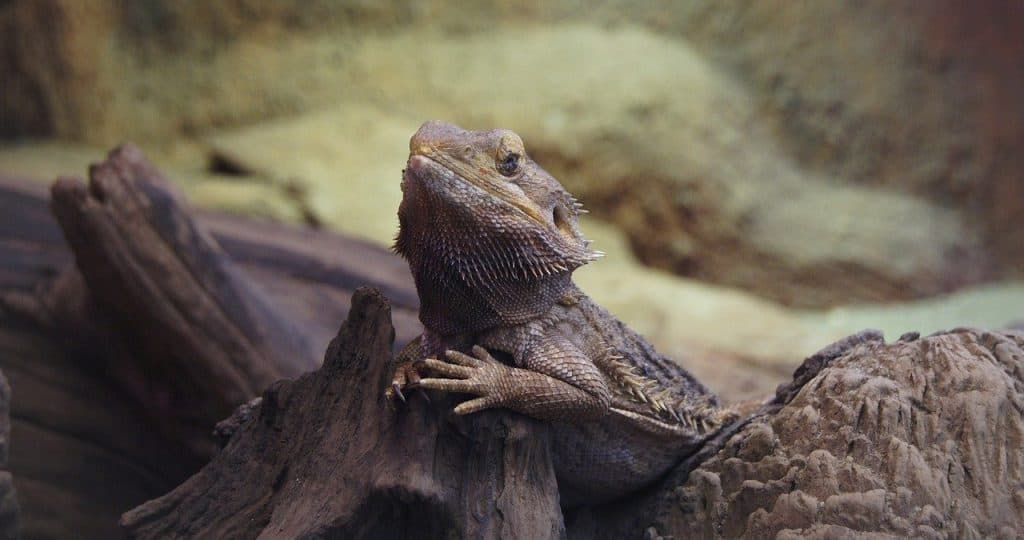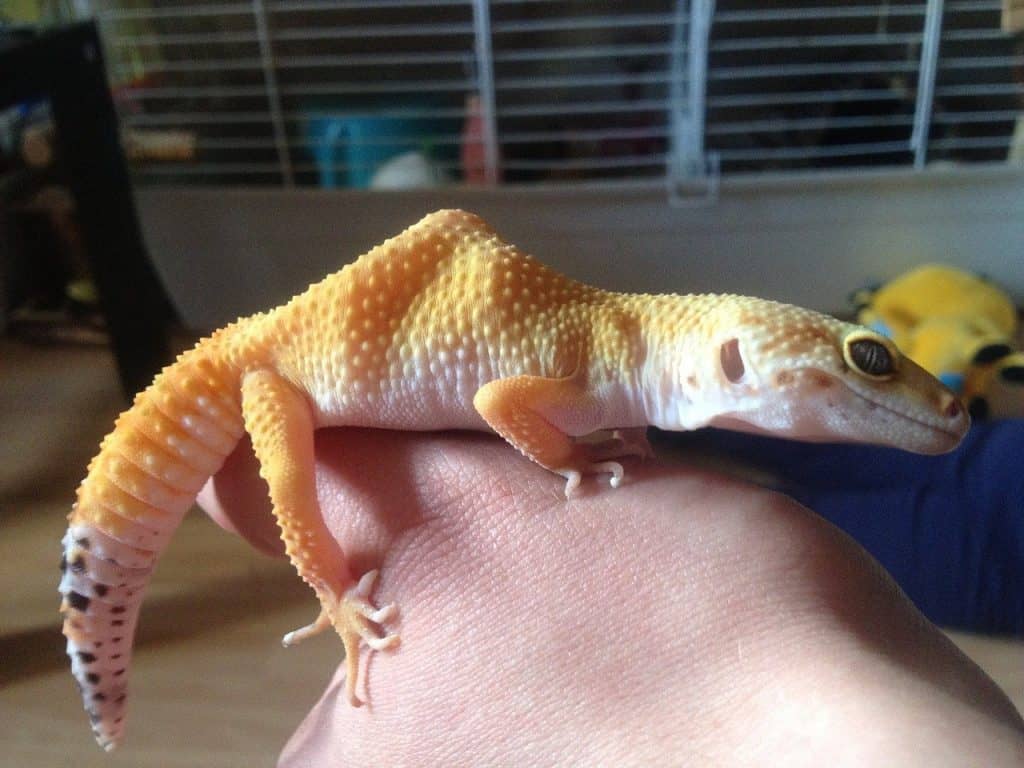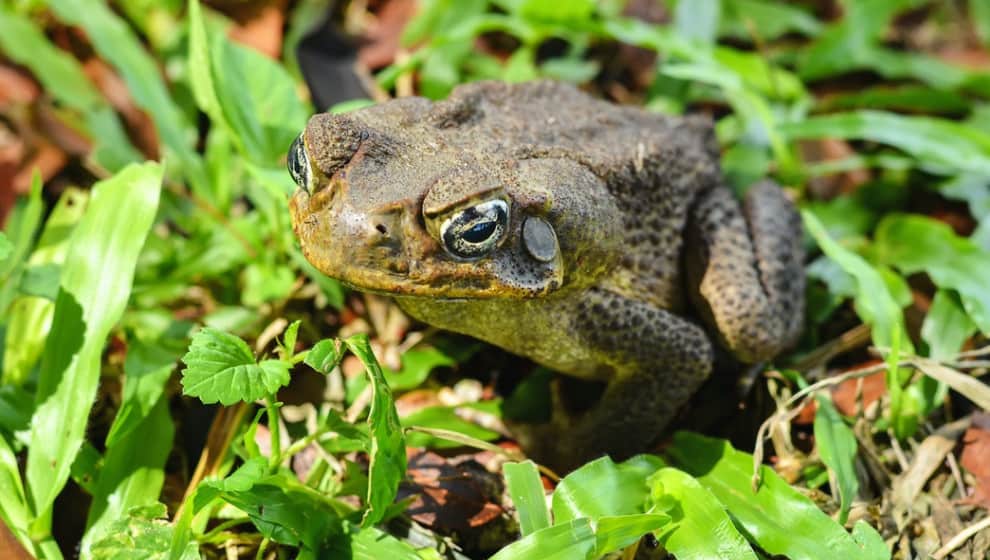Frogs are carnivorous; they likely eat various insects available in the different regions of the world. The food intake of the frog can be determined by the body size in age. Small frogs generally intake small insects such as tarantula, snakes, mice, and some smaller size birds. Frogs never like to eat dead insects, not true for some wild frogs Frogs eat by live prey including insects, spiders, worms, and snails. A larger frog can gulp a mouse with a mouthful bite. Unlike
humans and other animals, the frog has a tongue attached to the front of its mouth rather than at the back. The frog throws its sticky tongue out of his mouth to catches its prey, wrap its tongue around the prey, and through the food down his throat. A frog catch prey with their sticky tongue to adhere to prey, closer observation spotted that frogs eyes closed completely as its tongue comes out to eat. Some tongue-less frogs use their fingers to catch prey for food.
Table of Contents
Frog Diet: What To Feed A Frog?
Many frogs are nocturnal feeders, they eat at nighttime. It is difficult to replace their natural diet in captivity. Before even hatching, Mr. tadpole starts eating its odd diet by eating his yolk sac. This is common in animals, they eat their placenta after childbirth. The crickets are the main food source of food for pet frogs. You can easily get them from pet stores or either way, is to raise them at home. Feeding your frog with fresh crickets can fulfill its nutritional requirement. These are the possible food options for your frog, feeding time can be decided according to their appetite, physical activities, and age. Frogs should be served with calcium supplements to lower down the risk of metabolic bone diseases.
The age of a frog plays a vital role in its diet. An adult frog is considered exclusively carnivores. These carnivores feed on animal products only. Eating animals and nothing else gives a boring impression of a frog’s diet. Frogs have a wide range of reptiles to eat. This wide variety includes
· Mealworms
· Waxworms
· Dubia roaches
· Brine shrimps
· Feeder fish
· Mice
· Worms
· Live bugs
· Spiders
· Crunchy insects
A medium-sized frog Loves a good treat of long earthworms, a small fish, little grasshoppers, tiny crunchy spiders, and live bugs. A growing toad starts to dine on larva and small mosquitoes.
These animal products will help them to stay fuelled up for the whole day.
Ginormous frogs sometimes act as cannibals. If they are ultra-hungry, they will eat other small frogs. Rather than other frogs, they eat small rats, mice, baby turtles, and snakes. Cannibalism is not found in frog’s lifestyles, but extreme hunger can even lead to this. If you are having a ginormous pet frog and a pet rat, keep them away from each other. Your ultra-hungry frog can take a deadly encounter with your pet rat.
The Staple Of A Frog`s Diet
Insects are the basic diet of frogs. Small insects, which includes worms, flies, mosquitoes, small snakes and spiders are the main creatures frog feed on. Fruits flies are easy to breed at home, you can find them in stores as well. Poison smart dogs and other small amphibians also feed on fruit flies.
Most feeder insects available in the market are not sufficient to deal with the nutritional requirement of frogs. Feed the worms with nutrient enrich fruits and then feed the frog with those worms. By this, the frogs will get more basic nutrients.
Frog’s Favorite Food
When it comes to tadpoles think along the lines as you think for baby food. Pet toads need food in small quantities as they don’t have a lot of physical activities. Baby frog loves eating small flies, mosquitoes. Following is the list of food that is good for tiny frogs.
- Hard boil egg yolks: Egg yolks are incredibly notorious. It serves the body with proteins. Protein-enriched diet help tadpoles to develop their back legs strong.
- Boiled green leafy vegetable: Frogs are unable to digest raw veggies. In a natural environment, they eat algae and sea vegetables are soft and easily digestible for the frogs. Boiling veggies at home mimic the procedure and helps to create the same diet.
- Store Preserved tadpole feed: While picking up a store brought feed for a frog, a major factor to focus on is the frog’s age. A baby frog needs low nutrients, tadpoles transitioning into adolescence need a more nutritious diet. However, an adult frog needs protein enriched diet to grow its back legs strong.
- Baby food: Buy the baby food jars from stores, the jars that contain veggies. Soft greenveggies are okay to feed a frog.
An adult frog loves to thrive on a carnivore’s diet. Giving the diet to a pet frog, keep in view it should mimic the diet a frog will get in a natural habitat. Frogs feed on animal products. By eating different animal products, they gain all the necessary nutrients. Eating some type of food all the time seems boring.
Tiny frogs enjoy insect snacks. Insects larger in size are tough for tiny tadpoles to eat. Even cricket is not easily eatable for toads. Their favorite insect’s snacks include
- Live or frozen brine shrimp
- Dead and frozen blood worms
- Finely chopped earthworms
- Baby mosquitoes and flies
Give To Frog Once Or Twice Per Week
The frog’s dietary routine is quite simple. It directly depends on the species and age of the frog. A young frog needs to be feed once every day. However, an adult frog needs to be fed in a small amount every 2-3 days. Overfeeding can act determinantal to your frog’s health. If you feed your frog a lot, it will become fat and lazy. An obese frog can develop different diseases in its body.
You should try to rotate the food items offer around for your frog. By doing this you can add more nutrients to your pet’s diet. Moreover, your frog won’t get bored of eating the same food twice a week. A varied diet is quite more likely to fulfil all nourishment requirements. Alike all other living organisms’ frogs need different food nutrition to grow well. Proteins helps frog to grow its back legs strong.
Feed To Frog Sparingly
Occasionally frozen fish food can be feed to your frog. Make sure the food should be carnivores fish diet. Such diets mimic the natural diet of the frog that some larger frogs eat in wild. Feeder fish can be offered to the larger frogs. Adult frogs can be offered very rarely a pinky mouse, or a defrosted fish. serving your pet frog with such a diet on regular basis can cause your frog to become obese and lazy. An obese frog ultimately leads to multiple diseases.
Food To Avoid Giving A Frog
Frogs feed on animal products. They eat small insects heartedly. Alike other living things there is a wide list of eatables that are not suitable for frogs in any case. Such eatables can harm them badly. They can even encounter the frog. Avoid feeding your frog any fruit or vegetable. Fruits and vegetables are nutrients enriched but still, they don’t act as a healthy diet for a frog.
Human table scarp is one of the most favorite feeds for pet animals. In the case of pet frogs, this is not at all suitable. The human diet includes meat, veggies, and fruits. As already mentioned, fruits and vegetables are not healthy for frogs.
Water Supply
Water consumption is necessary for all living things. The frog’s survival is all about water. Their body demands water even if they are on land. Frogs are both land and water animal, they breathe with their skin. Frogs get oxygen from water with their skin, they will drown away if there is not enough oxygen in the water. Being on the dry land frog gets all the water and oxygen virtually from their skin. This process can only take place if their skin remains moist. If moisturizer vanishes away from frogs’ skin, its survival will become tough. The moisture present in their skin helps them to stay alive on dry land.
The frog’s hydrating mechanisms are different from human beings and other animals. Unlike us, they don’t drink water by mouth. Frogs have a special type of skin with the quality of absorbing water. The part of the skin by which frogs absorb water to stay hydrated is known as the ‘drinking patch’. The area of skin that has the quality of absorbing water is located on their belly and underside of their thighs.

